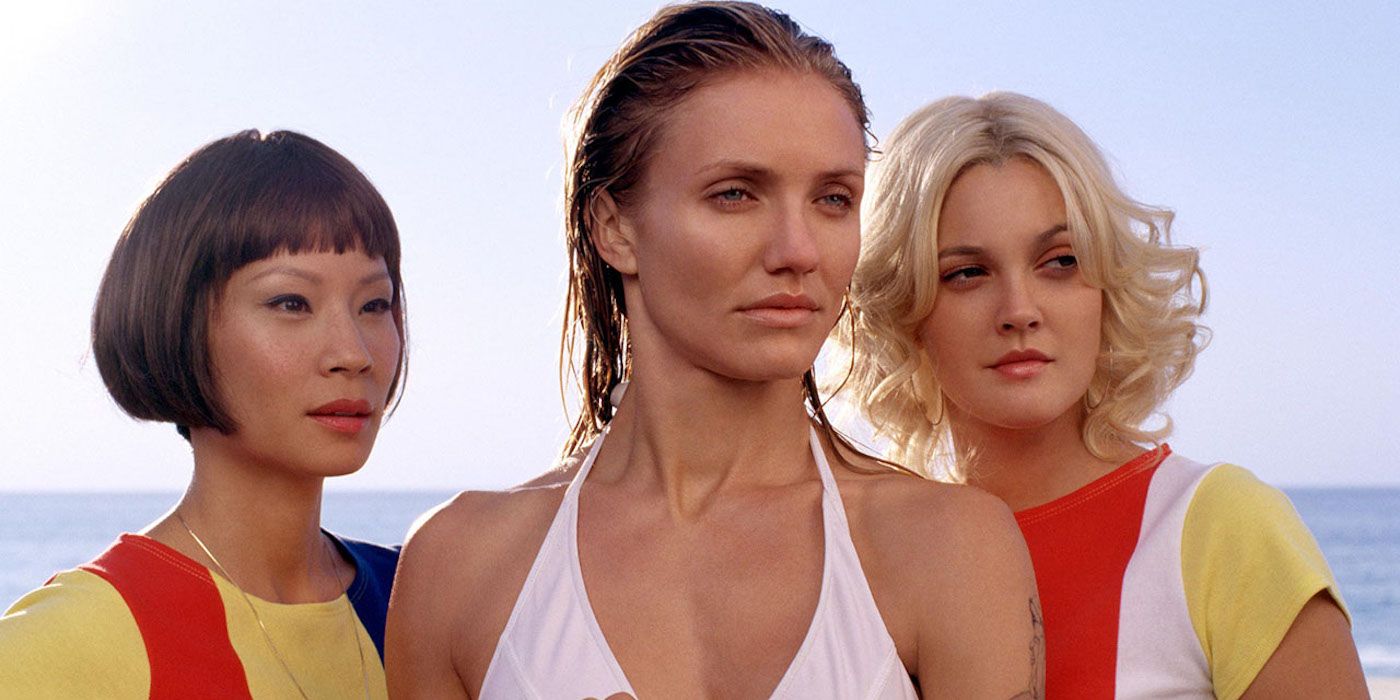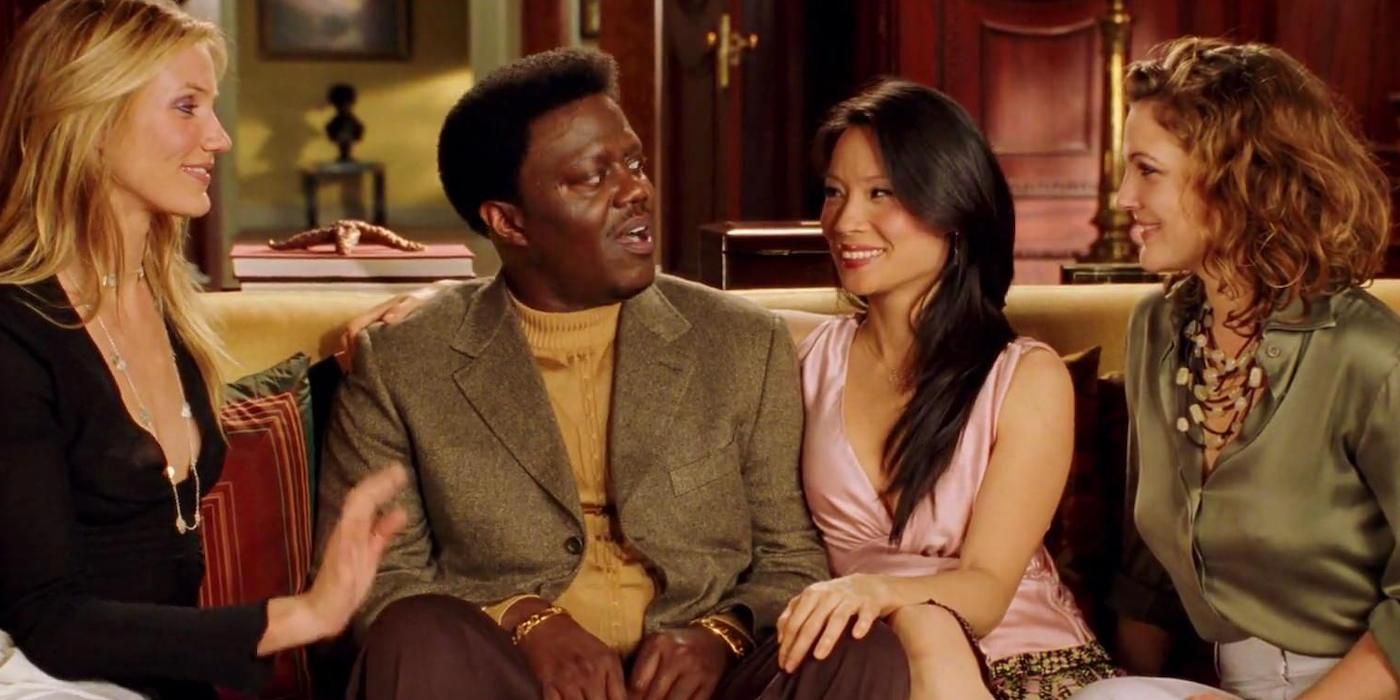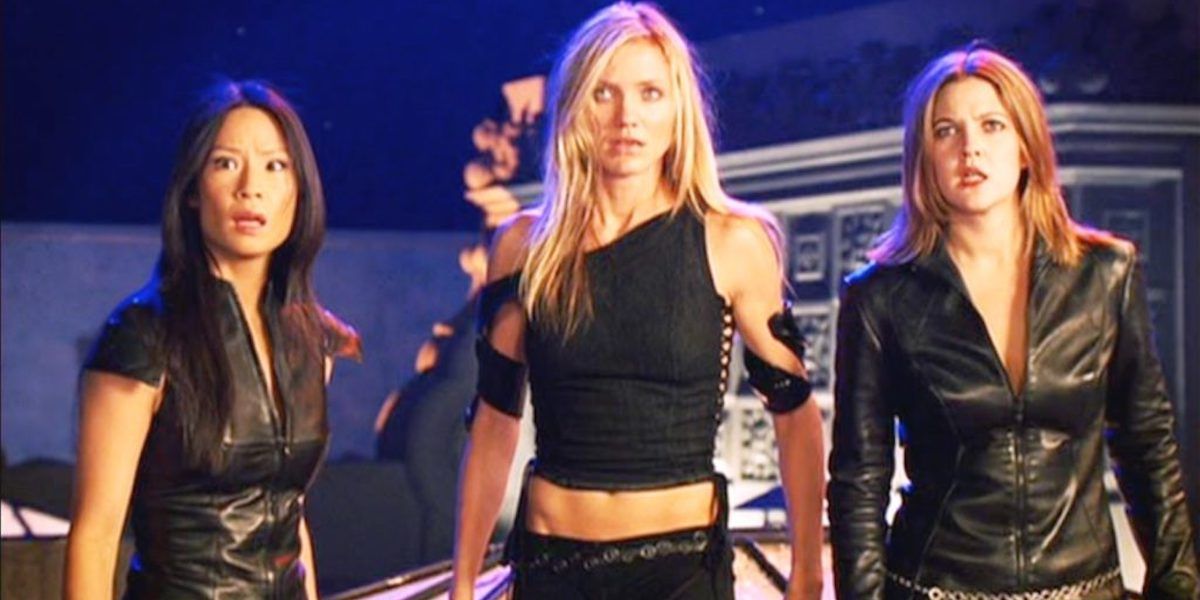Maximalism as a filmmaking style appears to be back in full swing with films like Everything Everywhere All At Once, RRR, and Elvis dominating both the cultural landscape and this year’s awards season, making it all the more necessary to reappraise Charlie’s Angels: Full Throttle as the maximalist masterpiece that it is. Though ill-received in its contemporary release environment for its nonsensical nature (and there’s no doubt that Bernie Mac’s new Bosley drops some unforgivably offensive one-liners here and there), looking back from the current theatrical era where so much focus in blockbusters is placed on connecting plot threads between films and television series makes that nonsensicality feel almost freeing, breaking out from the confines of physics and realism that cinema continuously struggles so hard to mimic.
One has to look no further back than the reappraisal of the Wachowskis’ Speed Racer (a film so visually lush that it’s astonishing it was ever critically panned) to see how much films from the 2000s are in need of a retrospective. After all, the 2000s represent an odd time for all art forms, in which the world was abandoning analogue in favor of new and sexy digital toys. With all the newfound possibilities of digital cinema, it’s only natural to assume that there’d be some hiccups in its integration before we got to see the beauty of Thanos throwing a planet at Tony Stark. However, through the lens of nostalgia, a lot of those hiccups don’t seem like hiccups at all. In fact, without Speed Racer, it’s very likely that there would be no Into the Spider-Verse, and without Charlie’s Angels: Full Throttle, it’s very likely that we wouldn’t have the Kingsmen franchise.
Director McG Throws All of His Music Video Skills Into Full Effect
Now known as the director of both Full Throttle and its classic 2000s predecessor, McG (the only name he credits himself by) got his start in music videos at the forefront of the MTV area, with classics under his belt ranging from Smash Mouth’s iconic “All Star,” The Offspring’s hilariously satirical “Pretty Fly (For a White Guy),” and Sublime's legendary "Santeria," within all of which you can see his anachronistic visual style on full display. With music videos so inherently goofy and emblematic of the 90s, McG makes no efforts to reign it in for his transition into film and to beautiful effect. He also flexes all of his supposed connections by packing the soundtrack with artists like the Prodigy, David Bowie, the Beach Boys, Journey, and so much more, all culminating in an original song by P!nk that runs throughout.
No matter how insane you remember the set pieces of Charlie’s Angels: Full Throttle may have been, the final product is significantly crazier. While the first film very much focused on spoofing the excess found in spy films like the James Bond and Mission: Impossible franchises, Full Throttle (as the title suggests) dials the visual carnage up to 11 as if an attempt to spoof itself. The increase in budget is apparent, as is the immediate cultural legacy of the original, with a stacked cast of new character cameos that include P!nk herself, Bruce Willis, John Cleese, Owen Wilson (in a hilarious CSI spoof) and even a young Shia LaBeouf. In fact, (minor spoilers ahead) Bruce Willis is immediately killed off upon his introduction only to cut to a joyful Hammertime dance sequence from stars Cameron Diaz (Natalie), Drew Barrymore (Dylan) and Lucy Liu (Alex) that ends in a couch flip directly referencing Singin’ in the Rain, as if to affirm that it is the women who are taking over the action genre from the Die Hard veteran with a seamless, musical sensibility.
‘Charlie’s Angels: Full Throttle’ Thrives Off of Its Cinematic References
Meta-cinematic statements like this run throughout the film. Take the opening scene for example, a technically jaw-dropping oner that would have almost certainly received acclaimed today. While the original Charlie’s Angels also opened with a long take shot inside an airplane before transitioning to a wicked skydiving scene, Full Throttle takes places all across several levels of a Mongolian bunker, with dozens of extras and all three titular females present in hilarious disguise. It then transitions to another skydiving sequence that defies the laws of physics themselves. This sequence and its similarity to the first film reveals this film’s mission statement: to be as joyously over-the-top as cinematically possible.
The carnage only continues as the bad guys begin to perform Matrix-level gun-fu stunts off dirt bikes in midair, or the girls get knocked back by an explosion only to perfectly land inside a speeding car. The film’s endlessly satirical use of wire-fu recalls everything from Diaz’s own role in the original Shrek to Crouching Tiger, Hidden Dragon (which Demi Moore’s iconic Madison Lee even directly quotes at some point). The pop culture referencing doesn't even stop there, as one of the film’s many new villains (Justin Theroux’s Seamus O’Grady, the evil ex-boyfriend of tomboy Dylan) is introduced in prison in a manner that directly spoofs Robert De Niro’s intro in the 1991 Martin Scorsese classic Cape Fear, accompanied by the same iconic theme tune.
The references however peak during the premiere of the fictional Maximum Extreme 2, starring Alex’s boyfriend Jason Gibbons (played by Matt LeBlanc who basically reprises his most iconic role as Joey from Friends). It’s not enough that the film-within-a-film’s poster is a blatant copy of Mission: Impossible II, but during the premier, Shia LaBeouf’s character comments “I hear the sequel is insane,” only for his newly adopted mother to reply “The first one is a classic,” clearly referring to the Charlie’s Angels franchise itself. What this demonstrates is that McG and his team, for all of their stylistic eccentricities, acted entirely under a self-aware and satirical lens, with a final product that bears more resemblance to blaxploitation spoof Black Dynamite than it does the actual Mission: Impossible films.
For All of Its Insanity, ‘Charlie’s Angels: Full Throttle’ Still Has Plenty of Heart
All these references and you’d correctly assume that the film is bursting at the seams with an idiosyncratic combination of action, comedy, outrageous special effects, and cinematic commentary, making it all the more ridiculous that the plot thread tying this all together is a fight for the names on the Witness Protection Program (let’s be honest, it could have been absolutely anything). To say that there is no heart amidst the nonsensicality however would be a grave mistake, as the running theme of these three titular Angels coming together to protect each other from any threats coming their way offers all the carefully crafted gleeful sentiment missing entirely from the majority of male-dominated action films. The sheer amount of reverence that the Angels have for their predecessors (evident in Natalie’s adoration of Madison and Dylan’s positive hallucination of former TV Angel Kelly Garret, who convinces her to return to her friends to protect them) also emblematizes the importance of women in iconic and empowering action roles as role models of on-screen representation.
Whether it’s your cup of tea or not, Charlie's Angels: Full Throttle has aged to become a fantastic example of how fun movies can be when they embrace the knowing ridiculousness of their premises rather than commit to something grounded and digestible (something that the Fast & Furious franchise is fully aware of with their growing absurdity). As goofy as it is, Charlie’s Angel: Full Throttle never gives you an opportunity to be bored, something that too many blockbusters of this era haven’t proved brave enough to do.



